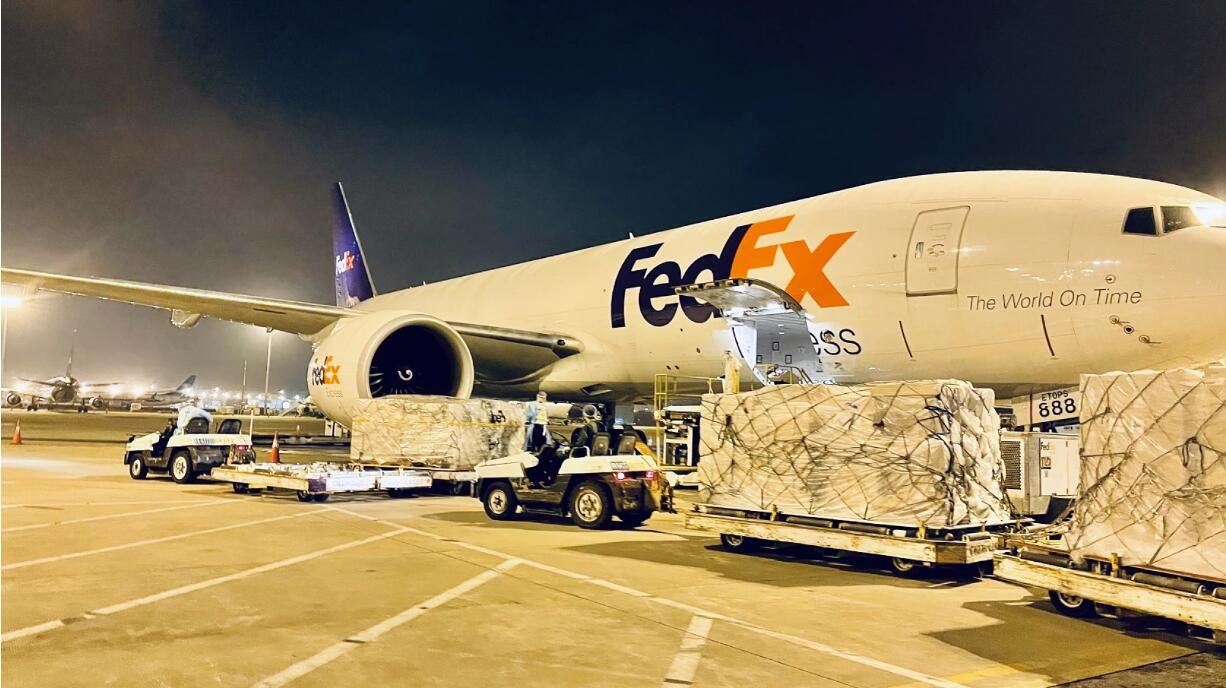
Clothing shipped by air to the United States, including taxes, to the door
- Time of issue:2025-07-26
Clothing shipped by air to the United States, including taxes, to the door
- Time of issue:2025-07-26
When it comes to shipping clothing by air to the United States, there are several crucial factors to consider to ensure a smooth and efficient delivery process. This includes understanding the logistics, managing taxes and duties, and optimizing the customer experience. In this article, we’ll discuss the various steps involved in shipping clothing by air to the U.S., from customs clearance to door delivery, while also highlighting key considerations such as costs, taxes, and the overall shipping process.

The Basics of Air Freight Shipping for Clothing
Air freight is one of the fastest methods for shipping goods, including clothing, across international borders. Whether you’re shipping a small order of luxury garments or a large shipment of wholesale fashion, air shipping provides reliability and speed. The process begins with the collection of the goods from the sender, followed by packaging, labeling, and transporting the shipment to the airport. Once at the airport, the goods are loaded onto an aircraft and flown to the United States.
Air shipping offers significant advantages, including quicker transit times compared to sea freight. While sea freight may take weeks to reach its destination, air freight can complete the journey in a matter of days, which is especially beneficial when you need to get clothing products to the market quickly.
Understanding Taxes and Duties on Imported Clothing
One of the critical aspects of shipping clothing to the United States is understanding the taxes and duties that may be imposed by U.S. Customs. Importing goods into the U.S. is subject to customs regulations, and clothing is no exception. The amount of tax and duty you’ll need to pay depends on the nature of the clothing, its value, and the country of origin.
In the United States, customs duties are calculated based on the Harmonized Tariff Schedule (HTS). Clothing, like most products, is classified into specific categories, each with its duty rate. For example, if you’re shipping T-shirts or dresses, the duty rate may vary depending on the material (e.g., cotton vs. synthetic fabrics) and other factors.
Additionally, the U.S. has a de minimis threshold for imports. As of 2025, shipments valued at $800 or less may be exempt from customs duties. However, this exemption does not apply to all types of products, and clothing may still be subject to taxes and fees, even if the shipment is under the $800 limit.
It’s also important to note that importers must pay the customs duty and taxes directly to U.S. Customs and Border Protection (CBP) or to a customs broker if one is involved in the process.
Door-to-Door Delivery: Ensuring Efficient Delivery
Once the clothing shipment clears customs, the next step is ensuring a smooth delivery to the recipient's door. A reliable logistics company will typically handle the final delivery process, using ground transportation to get the goods from the U.S. airport to the customer’s location. This service is often referred to as “door-to-door” delivery, which ensures that the clothing reaches the customer’s doorstep without requiring them to pick it up at a local facility.
This last-mile delivery is an essential part of the shipping process and can significantly affect customer satisfaction. When choosing an air freight company, it's crucial to consider the speed, reliability, and transparency of their door-to-door services.
Many logistics companies also offer tracking services, allowing customers to monitor the status of their shipment in real-time. This feature is particularly useful for businesses and individuals looking to stay updated on the progress of their orders.
The Costs Involved in Air Freight Shipping
The cost of shipping clothing by air can vary widely depending on several factors, including the weight and size of the shipment, the shipping method, and the distance between the origin and destination. Air freight is generally more expensive than sea freight, but it is worth the additional cost for time-sensitive shipments.
Several elements contribute to the total cost of air shipping, such as:
1. Shipping Rate: The cost is often calculated based on the volumetric weight or actual weight of the shipment. Volumetric weight is used when the package is large but light, and it is determined by the dimensions of the package.
2. Fuel Surcharges: Air freight carriers may apply fuel surcharges, which fluctuate based on current fuel prices.
3. Customs Fees: As previously mentioned, taxes and duties are a significant factor to consider when shipping clothing to the United States. Customs fees are typically charged based on the value of the goods and their classification.
4. Handling and Packaging Fees: Depending on the logistics provider, there may be additional fees for packaging, handling, and insurance.
5. Door-to-Door Delivery Charges: These charges cover the cost of delivering the goods to the recipient's door and vary based on location and service level.
To get an accurate estimate, it’s essential to request quotes from multiple air freight providers. Many logistics companies provide online tools to calculate the shipping cost based on the weight and size of the shipment.
The Role of Customs Brokers
Customs brokers play a vital role in the international shipping process, especially when it comes to customs clearance. These professionals are responsible for ensuring that all necessary documentation is in place and that the goods comply with U.S. customs regulations. A customs broker can also help navigate the complexities of duties and taxes, ensuring that you pay the correct amount.
For businesses shipping clothing to the U.S., working with a customs broker can streamline the entire process, reducing the risk of delays or penalties due to incorrect or incomplete paperwork.
Conclusion
Shipping clothing by air to the United States offers businesses and individuals an efficient and speedy solution for getting goods across international borders. However, it’s important to be aware of the various taxes, duties, and logistics considerations that can affect the overall cost and delivery process.
By understanding the ins and outs of air freight, including customs clearance, taxes, and door-to-door delivery, you can ensure that your clothing shipments arrive quickly and cost-effectively. Working with a reliable logistics provider and a knowledgeable customs broker can help simplify the process and ensure a smooth delivery experience.
ADDRESS: 101 Qinghui International, No. 160 Qisha Ferry Road, Shatian Town, Dongguan City, Guangdong Province
CONTACT NUMBER: 13620081619 / 18680404400
CONTACT PERSON: Shelly / Alan
E-mail: shelly@qhgj56.com
alan@qhgj56.com
Copyright © 2025 QH INTERNATIONAL LOGISTICS LIMITED

